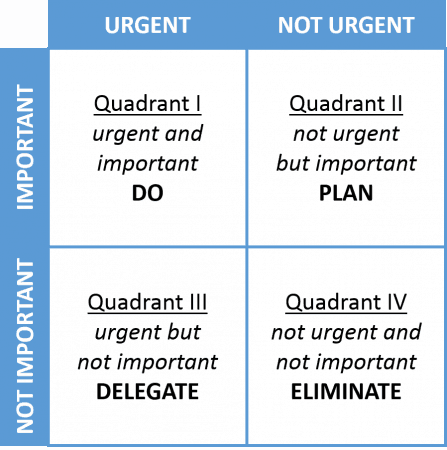29 de October, 2019

How many times have you said, “I am so busy” this week? How many of these times have you used it as an excuse to decline an invitation? Frankly, the “B-word” is so overly used in our status-driven, stressed-out society that it has lost all meaning.
Everyone is busy and everyone has the same 24 hours in a day. If you are being honest with yourself and others, all you are really saying is, “that is not a priority for me right now.” Perhaps that would be the more honest answer, even if it sounds rude. Here are some alternatives for things you can say instead of using busyness as an excuse or explanation.
5 Things to Say Instead of “I’m so busy”
So Much to Do, So Little Time: Establish Priorities
Time is the most precious commodity. It is important to master the art of explanations for turning down invitations, projects, and events that are not your priority. But you must know how to properly assess your priorities so you can feel more balance in your work and life.
Former U.S. President Dwight Eisenhower understood that everything you do in life and work can be classified by its importance and urgency. He used these two attributes to prioritize his tasks into a matrix that yields 4 different strategies, which I find very helpful.

What Is Important to You?
The Eisenhower Matrix is a great tool to prioritize your time. However, the classification of activities can be deeply personal. Watching TV is widely regarded as a fruitless task. In general, people would say reading is better for you. But if you are a literary editor and need a break from the written word at the end of the day, watching the World Series with your husband can be both a relationship-building time and a restorative activity and fall into quadrant 2, the most important of your quadrants. In the end, to be successful at prioritizing, you need to know what is important to you and what your long-term goals are in work and in life.
The most important thing is to keep this matrix in mind as you run through your to-do list. If you simply have a long list of tasks, it will be difficult to know where to begin. Try using this matrix to help you classify the items on your list so you can develop a plan of action and be more effective and intentional with your work.
____________________________________________________________
Do you feel stuck or anxious about the future? Do you feel it’s time to take a leap to keep growing in your career or business? No matter your situation, this free guide will walk you through my coaching process to get you moving and making progress. Get your copy now!
¿Te resulto informativo? Síguenos en @icatalyze para más contenido como este.

In today’s business landscape, where automation and digitalization are on the rise, human skills have become more valuable than ever. Emotional intelligence (EI) not only improves individual performance but is also a key driver for organizational productivity and profitability. According to Capgemini, developing EI in the workplace not only improves communication but also drives decision-making […]
Ver más »
This article was previously published in Spanish for Entrepreneur En Español. (Read original version here) According to one study, 90% of high-performing employees possess high emotional intelligence (EI), underscoring its importance in effective leadership. As the year draws to a close, leaders have an invaluable opportunity to reflect on their journey and assess their impact. […]
Ver más »
Technological advances are reshaping how we live and work in a world increasingly dominated by Artificial Intelligence (AI) and automation. According to the World Economic Forum, 50% of workers will need to acquire new skills by 2025 due to the impact of emerging technologies. Yet, amidst this digital revolution, a crucial question arises: […]
Ver más »